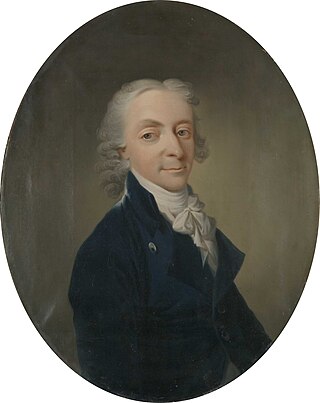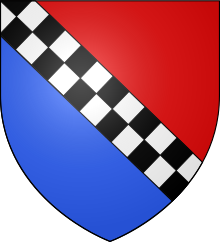
Barony Rosendal is a historic estate and manor house situated in Kvinnherad in Hordaland county, Norway. The barony was built in the 17th century by Danish noblemen on the old estate of the Norwegian noble Galte family, the current barony estate making out the historical farms of Hatteberg, Mel and Eik.

Marcus Gjøe Rosenkrantz was a Norwegian Government Minister and Member of Parliament.

Rosenholm Castle is Denmark's oldest family-owned castle. It is located on Djursland, north of Hornslet and northeast of Aarhus. It is one of the best-preserved complexes from the golden age of the manor house – from 1550 to 1630.

The Gyldenstjerne family, also spelled Gyldenstierne, is a Danish, Norwegian, and Swedish noble family divided into various branches and ranks. It is one of the oldest noble families in Scandinavia. The family surname appears, in the form of Guildenstern, in William Shakespeare's tragedy The Tragedy of Hamlet, Prince of Denmark. The surname should not be confused with Gyldensteen, the name of another short-lived Danish noble family, first recorded in 1717 and which became extinct in 1749.
Events in the year 1725 in Norway.

Ditlev Vibe was a Danish government official and Governor-general of Norway from 1722 until his death.
Events in the year 1610 in Norway.
Events in the year 1661 in Norway.
Events in the year 1630 in Norway:
Axel Mowat was a Norwegian naval officer and land owner.

Karen Mowat was a Norwegian noblewoman, an heiress, and landowner of Norwegian and Scottish origins.
Events in the year 1592 in Norway.

Frederik Christian Rosenkrantz was a Danish noble, statesman and a wealthy landowner.

Skaføgård is a manor house in the parish of Hvilsager in Syddjurs Municipality in the eastern Jutland peninsula of Djursland, Denmark. It is not one of Denmark's largest manor-houses, but one of the best preserved. Inside there is an enormous oak closet carved by the Dutch carpenter Mikkel van Gronningen whose most famous work is the pulpit in Århus Cathedral. The closet covers 13 m2 (140 sq ft) of wall space and, in view of its rich detail, is considered to be one of the most outstanding examples of carved wooden Renaissance furniture in Northern Europe.
Events in the year 1685 in Norway.

Ludvig Rosenkrantz was a Danish-born noble, military officer, civil servant, and land owner who settled in Norway. He was a member of the noble Rosenkrantz family and the first Baron of Norway.
Events from the year 1628 in Denmark.

Axel Rosenkrantz was a Norwegian landowner and baron.

Næsbyholm is a manor house and estate located east of Tybjerg Lake, between Sorø and Glumsø, in Næstved Municipality, some 70 km (43 mi) southwest of Copenhagen, Denmark. Since 1610, Næsbyholm and Bavelse have had the same owners. The three-winged Dutch Renaissance-style main building was reconstructed after fires in 1932 and 1947, incorporating elements from 1585. It is now used as a venue for weddings, conferences and other events. The scenic park was laid out in the 18th century. The Næsbyholm-Bavelse estate covers 1,424 hectares of land (2012), of which approximately half is forest.

Ove Ramel was a Danish landowner and administrator.





















